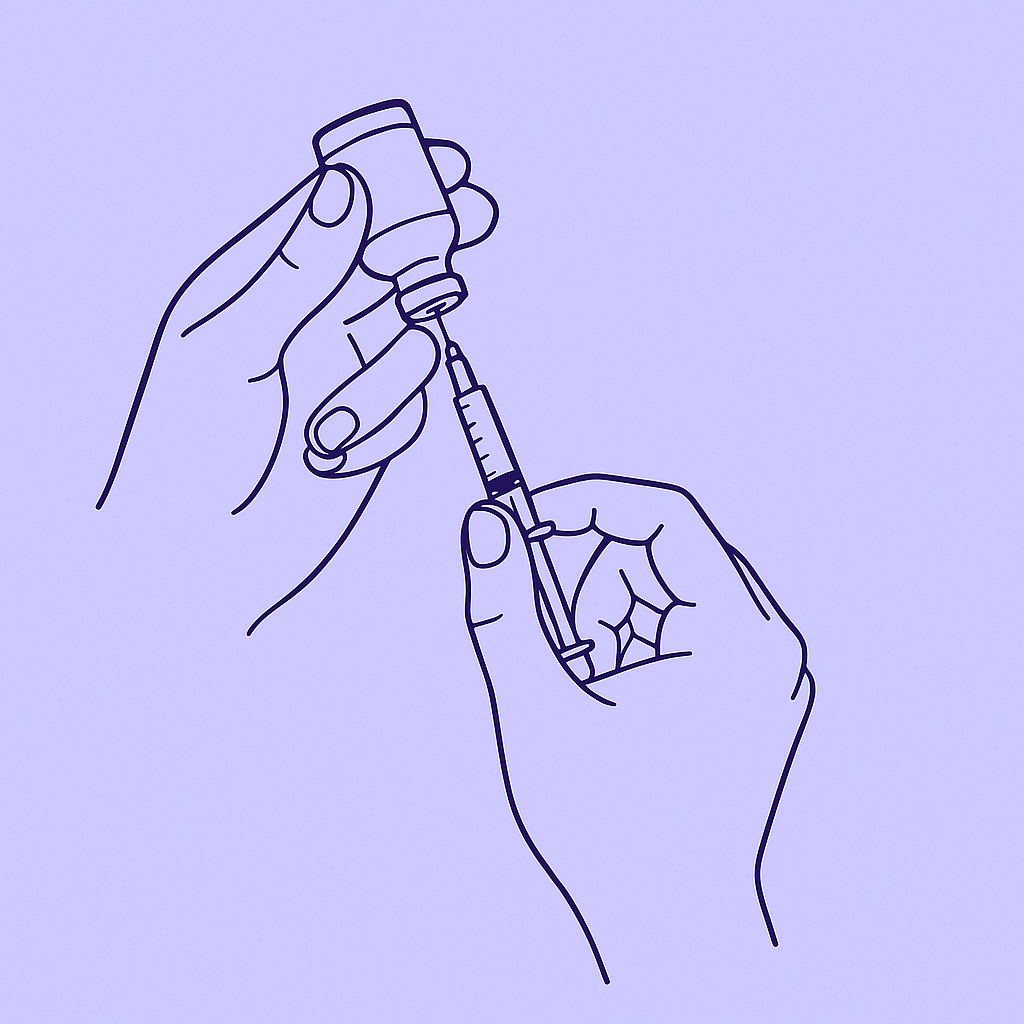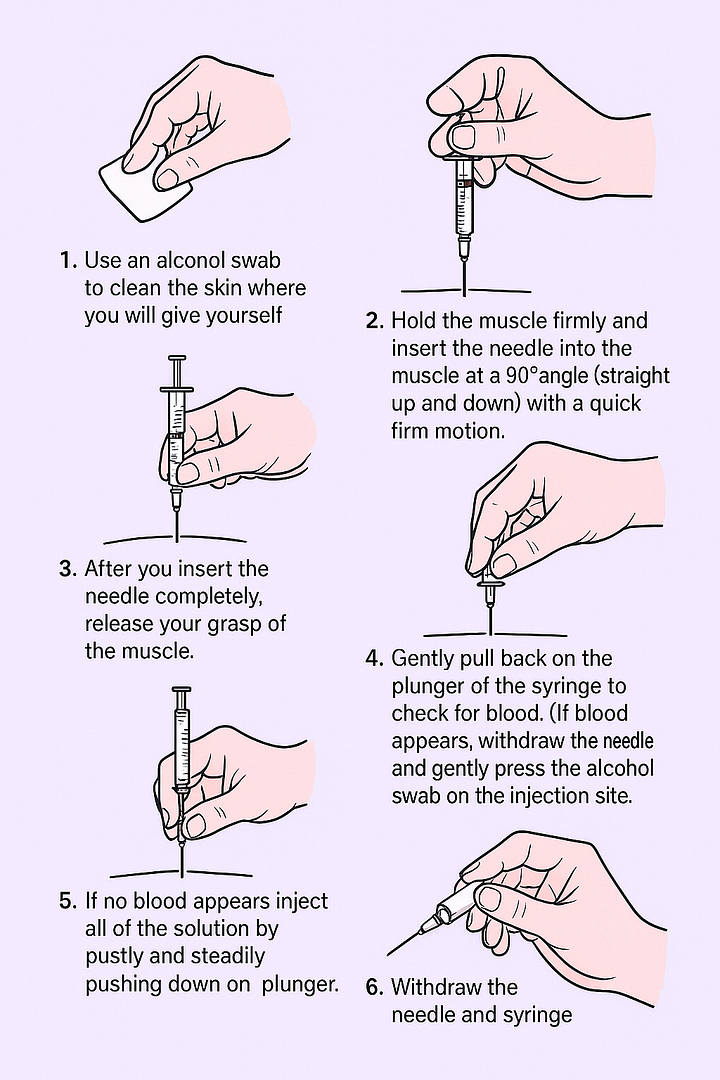
Intramuscular Injections (IM) Guide
Intramuscular (IM) injections deliver medication deep into the muscle tissue, allowing it to be absorbed quickly into the bloodstream. This method is commonly used for vaccines, antibiotics, hormone treatments, and other medications that require rapid or sustained absorption.
This guide is designed to walk you through every step of the process—from understanding what subcutaneous injections are, to choosing the right site, preparing your materials, and injecting with confidence. Whether you’re new to self-injection or just need a refresher, we’re here to help you feel informed, capable, and supported every step of the way.
Intramuscular Injections (IM)
An intramuscular injection delivers medication deep into the muscle tissue. Please verify your medication can be given IM on your Rx Summary.
About the Syringe
There are 3 parts to a syringe: the needle, the barrel, and the plunger. The needle goes into your skin. The barrel holds the medicine and has markings on it like a ruler. The plunger is used to get medicine into and out of the syringe. The syringe has markings on it so you now how many milliliters (mL) you are pulling up.
How to Draw Up the Medication
First, look carefully at the instructions listed on your medication vial/package as well as on your Rx Summary. You will be pulling up the medication by mL.
It is very important to clean your vial top with an alcohol wipe (or isopropyl alcohol/gauze) before each use to maintain the sterility of your medication. Let it dry completely before puncturing the vial. When you are ready to draw the medication into the syringe, hold the syringe in your hand with the needle pointed up. With the cap still on, pull back the plunger to the line on your syringe for your dose. This fills the syringe with air. For example, if you need 1 mL of medicine, pull the plunger to the line beside the number 1 on the syringe. Next, remove the cap and insert the needle into the rubber top of the vial. Do not touch or bend the needle. Depress the plunger and push the air into the vial. This keeps a vacuum from forming so that the medicine will flow easily into the syringe. Turn the vial upside down and hold it up in the air. Make sure that the medicine covers the tip of the needle the entire time. As you did before, pull back the plunger to the line on your syringe for your dose. Remove the needle from the vial. The medicine is ready to inject.

This illustration captures a key step in preparing for an injection—drawing medication from a vial into a syringe. The image shows one hand holding a medicine vial firmly while the other gently pulls back the syringe plunger to extract the liquid.
Where To Give the Injection
➔ Upper Arm (Deltoid): Uncover your arm up past your shoulder joint. At the top of your arm, feel for your shoulder bone (acromion process). Find the area three finger breadth’s below where you feel your shoulder bone.
➔ Outer Thigh (Vastus Lateralis): Uncover the entire leg. Find the area halfway between the knee and hip and slightly to the side.
➔ Buttock (Dorsogluteal): Find the the upper, outer quarter of the buttock towards the hip bone (approximately at the top of where a pants pocket would be)
How to Give the Injection
- Use an alcohol swab
- Hold the muscle firmly and insert the needle into the muscle at a 90 degree angle (straight up and down) with a quick, firm motion
- After you insert the needle completely, release your grasp of the muscle
- Gently pill back on the syringe to check for blood. (If blood appears, withdraw the needle and gently press the alcohol swab on the injection site
- If no blood appears, inject all of the solution by pustly and steadily pushing down on the plunger.
- Withdraw the needle and syringe

How do I get rid of used syringes and needles?
It is important to dispose of the needles and syringes correctly. Do not throw needles into the trash. You may receive a hard plastic container made especially for used syringes and needles. You can also use a soda bottle or other plastic bottle with a screw lid. Make sure that both the syringe and needle fit into the container easily and cannot break through the sides.